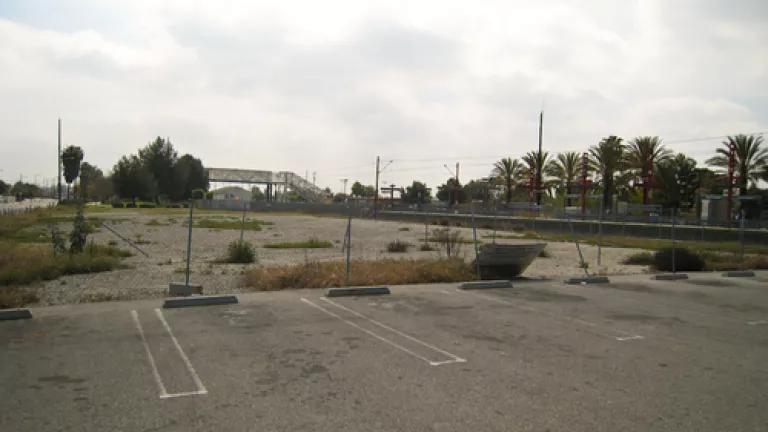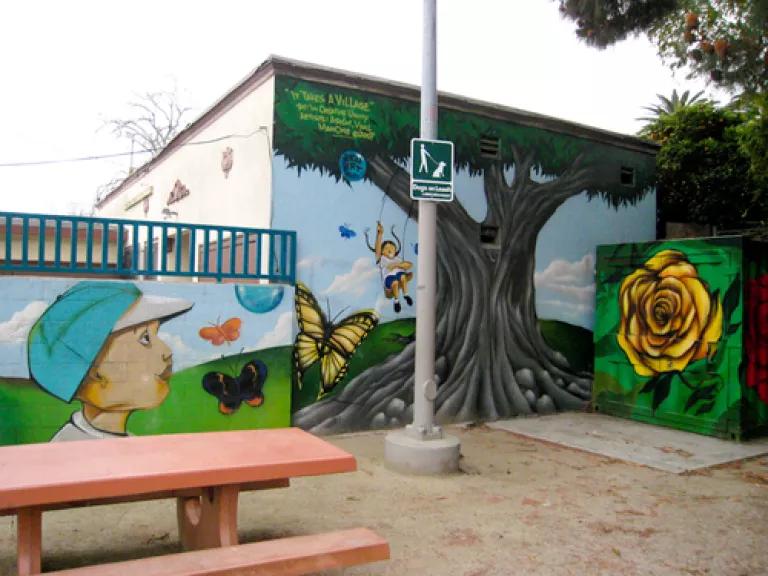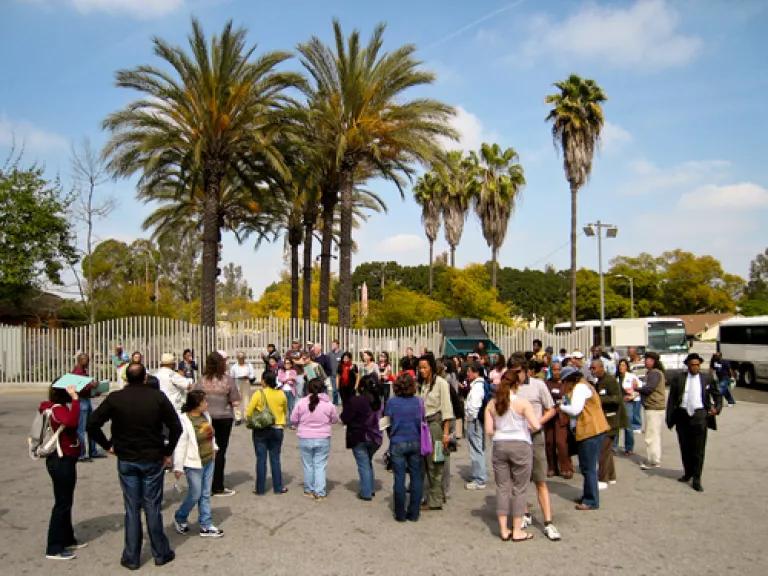

A former vacant lot: Richardson Family Park in the West Adams District. (Photo credit: NRDC)
When you see a vacant lot, how does it make you feel? Do you ignore it? Avoid it? Or think about how it might be turned to better use for the community?
In South Los Angeles, some folks are looking past what they see and imagining what their vacant lots might become.
Earlier this week, I attended “Re-Imagining Empty Space: Innovations for an Active South L.A.,” a two-day conference that explored ways South Los Angeles could reclaim its unused and underused spaces and turn them into urban parks and community gathering places. Convened by Community Health Councils (CHC), a local non-profit health advocacy group, the conference was made up of a day-long bus and bike tour through South L.A., followed by a half-day summit with distinguished panelists from L.A. and across the country.
South L.A. is one of the most park-poor areas in southern California, and also has some of the highest rates of obesity, cardiovascular disease, and diabetes. For South L.A.’s children, having enough safe, accessible parkland and ample recreational opportunities to allow them to lead healthy and active lives is a matter of life and death.
On our tour, we saw that some of the community’s re-imagining efforts have already paid off. In Jefferson Park, a landscape designer pressured an oil company and the City of Los Angeles to transform a blighted former drilling site into a beautifully landscaped pocket park. And in West Adams, the community persuaded the owner of a trash-strewn lot next to an affordable housing complex to create what is now Richardson Family Park, a safe place where people in the neighborhood can come together and kids can play.
Other efforts show great promise for the future. One pilot project would create a five-block network of “green alleys” – with amenities like LED lighting, street trees, drought-tolerant plants, and artwork – to turn the community’s dangerous and forgotten alleyways into attractive, usable open space. And in Watts, a health-based initiative called Project RENEW plans to apply elements of transit-oriented design (TOD) to one of the community’s main light-rail stations to improve pedestrian and bike access.


103rd Street Station in Watts, where Project RENEW will aim to create walkable connections to community destinations like the post office, supermarket, library, and health center. (Photo credit: NRDC)
The summit was inspiring and eye-opening, and there ought to be many more like it. This also was just the beginning of a conversation that I hope will lead to healthier, safer, and more sustainable communities throughout South L.A.

